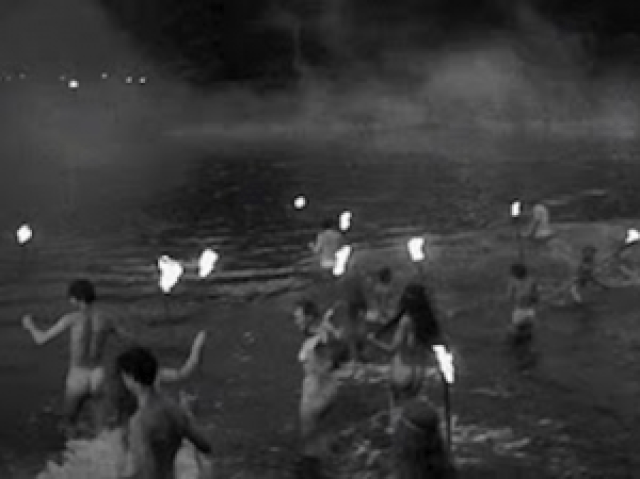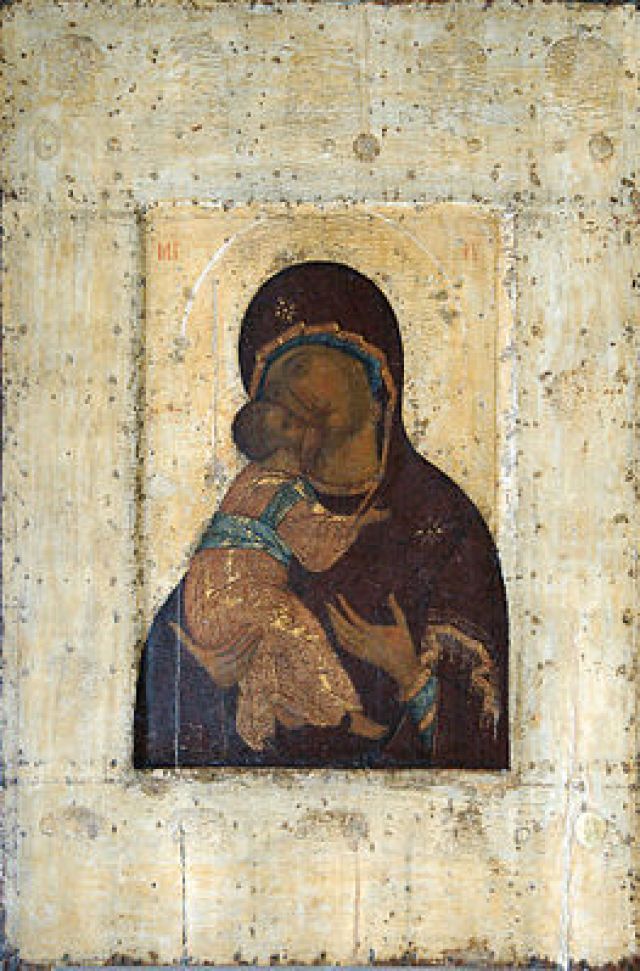









I don’t have to say a lot to say about Christianity and cinema in Andrei Rublev (1966) by the great Andrei Tarkovsky, master of the long-shot form of the time-image. Just one quick comment about the structure of the film and the powerful realization of redemption-resurrection in this example of postwar avant-garde film. I think what I saw last night was the 205 minute long version from 1966.
About the great icon maker Andrei Rublev, the film is set in muck and human violence of 14th C. Russia. In the opening scene (what should we call him?) a metaphysical escape artists rigs up a hot air balloon contraption and launches off from the spire of church. The opening shot show the an airborne view of the Russian countryside before the pilot crashes back to earth. The film tracks the sublime beauty of nature and the spectacle of human violence and suffering, The vow of silence of the artist and the creation of new life by a young orphan who risking life and limb casts a gigantic bell. The peal of bells ringing across the countryside seen from the air awakens the earthbound Rublev to new life and he and the young craftsman continue on to Moscow where the artist has been commissioned.
Reflecting the “simple” piety of its subject matter, the entirety of the film is shot in lush brown black white and grey until the final epilogue. Shifting to color, the camera scans works by the original artist and the blare of cheesy religious music. I was about to give up on it. But the last image stays with the icon of Christ the Redeemer put to the fierce crack of lightning. And then rain washing away at a surface viewed from close up gives way to a rich green pasture scene of redemption-resurrection, a vision of nature with no human presences, just horses and wet water.






